Themed collection Environmental Science: Water Research & Technology Recent Review Articles

Moving beyond silver in point-of-use drinking water pathogen control
Managing drinking water-associated pathogens that can cause infections in immunocompromised individuals is a persistent challenge, particularly for healthcare facilities where occupant exposures carry a substantial health risk.

Environ. Sci.: Water Res. Technol., 2024,10, 1009-1018
https://doi.org/10.1039/D3EW00564J
The removal efficiency of emerging organic contaminants, heavy metals and dyes: intrinsic limits at low concentrations
In this work, we exploit Langmuir adsorption isotherms to compare the performance of different materials (adsorbents) in removing contaminants (adsorbates) from water.

Environ. Sci.: Water Res. Technol., 2023,9, 1558-1565
https://doi.org/10.1039/D2EW00644H
Targeting current and future threats: recent methodological trends in environmental antimicrobial resistance research and their relationships to risk assessment
Recent research on antimicrobial resistance in the environment has emphasized targeted methods. Increased use of non-targeted methods is needed to determine how frequently novel resistance genes arise.
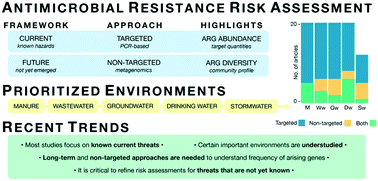
Environ. Sci.: Water Res. Technol., 2022,8, 1787-1802
https://doi.org/10.1039/D2EW00087C
CFD-accelerated bioreactor optimization: reducing the hydrodynamic parameter space
CFD modeling of fluidized bed bioreactors can identify desirable operational regimes and improve design.

Environ. Sci.: Water Res. Technol., 2022,8, 456-464
https://doi.org/10.1039/D1EW00666E
Emerging investigator series: modeling of wastewater treatment bioprocesses: current development and future opportunities
Potential modeling framework of integrating mechanistic and data-driven models to address the microbiological composition and functions that are currently underrepresented in standalone models.
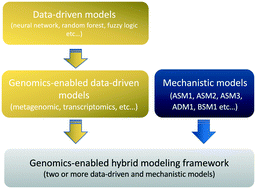
Environ. Sci.: Water Res. Technol., 2022,8, 208-225
https://doi.org/10.1039/D1EW00739D
Emerging investigator series: could the superoxide radical be implemented in decontamination processes?
The superoxide radical (O2˙−) is an important reactive oxygen species (ROS) in diverse natural aquatic systems and engineered water treatment processes.
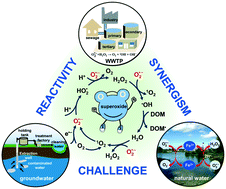
Environ. Sci.: Water Res. Technol., 2021,7, 1966-1970
https://doi.org/10.1039/D1EW00463H
Urban stormwater capture for water supply: look out for persistent, mobile and toxic substances
Urban stormwater is a source of persistent, mobile and toxic substances, however the risk for water resources is unknown.

Environ. Sci.: Water Res. Technol., 2023,9, 3094-3102
https://doi.org/10.1039/D3EW00160A
Anaerobic membrane bioreactors for resource recovery from municipal wastewater: a comprehensive review of recent advances
The potentials of AnMBR for resource recovery from municipal wastewater are discussed. The main aim is to provide key insights into overcoming key challenges for full-scale implementation from a technical, environmental and economic point of view.
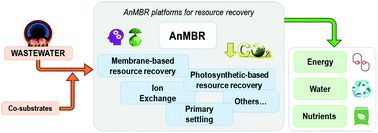
Environ. Sci.: Water Res. Technol., 2021,7, 1944-1965
https://doi.org/10.1039/D1EW00217A
Encapsulating microorganisms to enhance biological nitrogen removal in wastewater: recent advancements and future opportunities
Encapsulating microorganisms is promising to enhance biological nitrogen removal (BNR) in wastewater, with benefits of increased efficiency, reduced inhibition, and improved stability.

Environ. Sci.: Water Res. Technol., 2021,7, 1402-1416
https://doi.org/10.1039/D1EW00255D
The potential contribution of urine source separation to the SDG agenda – a review of the progress so far and future development options
Closing the human nutrient cycle with decentralized urine separation would help to achieve progress in food security and water protection – especially in poor countries. For this, radical innovation is needed along the whole sanitation value chain.
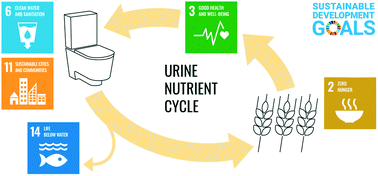
Environ. Sci.: Water Res. Technol., 2021,7, 1161-1176
https://doi.org/10.1039/D0EW01064B
Mechanism of lithium ion selectivity through membranes: a brief review
The ion transportation process through a membrane was divided into 3 sequential stages, where the ion selectivity could be determined by the ion charge, hydration energy, channel size and surface chemistry.

Environ. Sci.: Water Res. Technol., 2024,10, 1305-1318
https://doi.org/10.1039/D3EW00769C
Zero-dimensional luminescent carbon dots as fascinating analytical tools for the treatment of pharmaceutical based contaminants in aqueous media
A review of the most recent research on the environmental implications of pharmaceutical contaminants, conventional treatment techniques, and the application of CDs for the extraction and degradation of pharmaceutics in wastewater.

Environ. Sci.: Water Res. Technol., 2024,10, 12-28
https://doi.org/10.1039/D3EW00220A
Recent advances in the treatment and recycling of mineral processing wastewater
Wastewater in the mineral processing industry: treatment technologies and reuse potential.
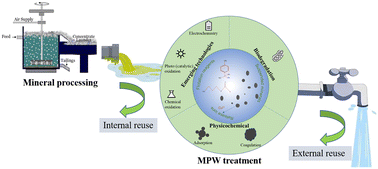
Environ. Sci.: Water Res. Technol., 2023,9, 1290-1304
https://doi.org/10.1039/D2EW00944G
Characteristics and application of iron-based materials in heterogeneous Fenton oxidation for wastewater treatment: a review
Advanced oxidation processes have been extensively studied in degrading pollutants. This study summarises the previous research on iron-based materials and helps researchers to select and develop more effective iron-based catalysts suitable for different AOP systems.

Environ. Sci.: Water Res. Technol., 2023,9, 1266-1289
https://doi.org/10.1039/D2EW00810F
A comprehensive review on the removal of antibiotics from water and wastewater using carbon nanotubes: synthesis, performance, and future challenges
This review describes the main characteristics of common antibiotics, their environmental and health effects, and also their fate in the environment, and furthermore provides insights into the adsorption of antibiotics onto CNTs as promising adsorbents.
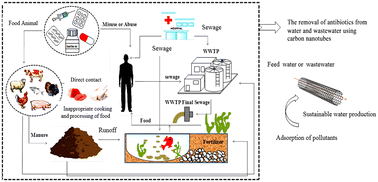
Environ. Sci.: Water Res. Technol., 2023,9, 11-37
https://doi.org/10.1039/D1EW00912E
Quantitative sustainable design (QSD) for the prioritization of research, development, and deployment of technologies: a tutorial and review
This tutorial review synthesizes literature on sustainability analyses to introduce quantitative sustainable design (QSD) for technology research, development, and deployment.
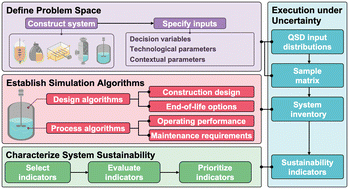
Environ. Sci.: Water Res. Technol., 2022,8, 2439-2465
https://doi.org/10.1039/D2EW00431C
Bismuth ferrite (BiFeO3) perovskite-based advanced nanomaterials with state-of-the-art photocatalytic performance in water clean-up
Bismuth ferrite nanohybrids as efficient photocatalysts for wastewater remediation against toxic azo dyes pollutants.
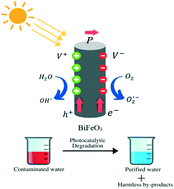
Environ. Sci.: Water Res. Technol., 2022,8, 1590-1618
https://doi.org/10.1039/D2EW00027J
Per- and polyfluoroalkyl substance separation by NF and RO membranes: a critical evaluation of advances and future perspectives
Treating PFAS-contaminated water is challenging due to the recalcitrant nature of PFAS. This review discusses advances in NF/RO membranes for separating PFAS from water and introduces a total management plan for handling the concentrated PFAS stream.

Environ. Sci.: Water Res. Technol., 2024,10, 1994-2012
https://doi.org/10.1039/D4EW00066H
Critical evaluation of current isolation, detection, and genotyping methods of Cryptosporidium species and future direction
Rapid detection and epidemiological monitoring are critical for preventing the spread of Cryptosporidium spp. and minimising public health risks. Techniques to isolate, quantify and genotype cryptosporidium are reviewed, along with future directions.
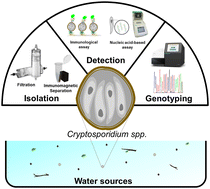
Environ. Sci.: Water Res. Technol., 2024,10, 1527-1551
https://doi.org/10.1039/D3EW00469D
A review of modified and hybrid anaerobic baffled reactors for municipal wastewater treatment with a focus on emerging contaminants
This review discusses municipal wastewater treatment using anaerobic baffled reactors (ABRs) and modified ABRs to remove C, N, P and emerging contaminants.

Environ. Sci.: Water Res. Technol., 2024,10, 1335-1354
https://doi.org/10.1039/D3EW00822C
Ion exchange enabled selective separation from decontamination to desalination to decarbonization: recent advances and opportunities
This review presents some major developments and progress in using ion exchange selective separation for decontamination, desalination, and decarbonization.

Environ. Sci.: Water Res. Technol., 2024,10, 1319-1334
https://doi.org/10.1039/D4EW00125G
Recent progress in 2D and 3D metal–organic framework-based membranes for water sustainability
Metal–organic frameworks (MOFs) have emerged as promising candidates for high-performance separation processes due to their desirable porous structure and highly tunable properties.

Environ. Sci.: Water Res. Technol., 2024,10, 1061-1096
https://doi.org/10.1039/D3EW00852E
Re-utilization of drinking water treatment residuals (DWTR): a review focused on the adsorption of inorganic and organic contaminants in wastewater and soil
Drinking water treatment residuals (DWTRs) show versatile adsorption properties for the removal of contaminants from wastewater and soil. Most adsorption studies are based on synthetic well-controlled solutions instead of real wastewater samples.

Environ. Sci.: Water Res. Technol., 2024,10, 1019-1033
https://doi.org/10.1039/D3EW00927K
Enhancing capacitive deionization for water desalination: the role of activated carbon in contaminant removal
The desalination of saline water is of great importance in water-stressed areas.

Environ. Sci.: Water Res. Technol., 2024,10, 1034-1060
https://doi.org/10.1039/D4EW00026A
Research progress in synthesis strategies of magnesium oxide nanoparticles for water treatment application
Magnesium oxide (MgO) is widely applied in various water treatment applications due to its fascinating properties.

Environ. Sci.: Water Res. Technol., 2024,10, 577-587
https://doi.org/10.1039/D3EW00528C
Preparation, modification and antifouling properties of polyaniline conductive membranes for water treatment: a comprehensive review
Summarises the preparation, modification and use of polyaniline conductive membranes for water treatment and antifouling purposes.
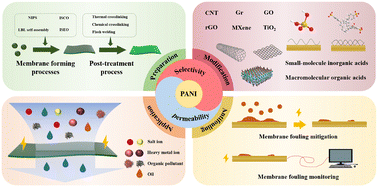
Environ. Sci.: Water Res. Technol., 2024,10, 105-127
https://doi.org/10.1039/D3EW00709J
Emerging trends in membrane-based wastewater treatment: electrospun nanofibers and reticular porous adsorbents as key components
Exploring material trends with reticular porous materials (MOFs, COFs) and electrospun nanofibers in hybrid membrane design for wastewater remediation.
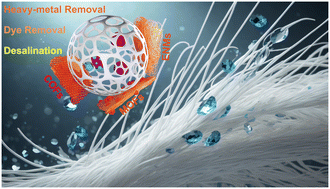
Environ. Sci.: Water Res. Technol., 2024,10, 29-84
https://doi.org/10.1039/D3EW00119A
Enhancing community well-being in African drylands through technology-based solutions in the water–energy–food–ecosystems nexus
This review emphasizes the potential of WEFE technologies in addressing challenges in African drylands, including water scarcity, energy access, and food shortages. It also delves into comprehensive research and approaches for enhancing community well-being and resource sustainability.
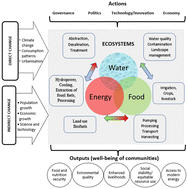
Environ. Sci.: Water Res. Technol., 2024,10, 85-104
https://doi.org/10.1039/D3EW00483J
Modeling the hydrological benefits of green roof systems: applications and future needs
Green roof contributes to urban stormwater management.
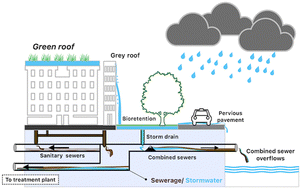
Environ. Sci.: Water Res. Technol., 2023,9, 3120-3135
https://doi.org/10.1039/D3EW00149K
Biofilters and bioretention systems: the role of biochar in the blue-green city concept for stormwater management
The main aim of the blue-green city concept is the reduction of the adverse impacts of stormwater by recreating the natural water cycle with the aid of green infrastructure in major metropolitan areas worldwide.
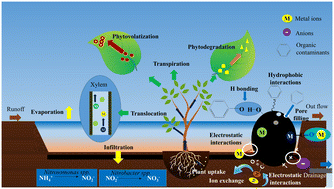
Environ. Sci.: Water Res. Technol., 2023,9, 3103-3119
https://doi.org/10.1039/D3EW00054K
Algal organic matter as a disinfection by-product precursor during chlor(am)ination: a critical review
Algal organic matter (AOM) is a major precursor of disinfection by-products (DBPs) during disinfection.
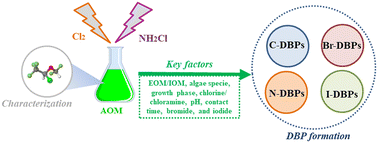
Environ. Sci.: Water Res. Technol., 2023,9, 2787-2802
https://doi.org/10.1039/D3EW00674C
Surface-modified ultrafiltration and nanofiltration membranes for the selective removal of heavy metals and inorganic groundwater contaminants: a review
The review critically highlights the state-of-art techniques for selective membrane fabrication, action mechanism, and performance for groundwater contaminant removal.

Environ. Sci.: Water Res. Technol., 2023,9, 2803-2829
https://doi.org/10.1039/D3EW00266G
Enzyme-coated biochar as a sustainable solution for water and wastewater treatment
Enzyme-coated biochar combines adsorption and biodegradation, offering an efficient approach to remove emerging aqueous contaminants.
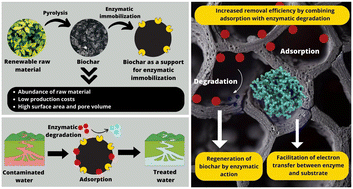
Environ. Sci.: Water Res. Technol., 2023,9, 2772-2786
https://doi.org/10.1039/D3EW00074E
Next generation decentralized water systems: a water-energy-infrastructure-human nexus (WEIHN) approach
This review highlights the pressing need for sustainable water management strategies within the water-energy-infrastructure-human nexus, and accentuates the critical roles of infrastructure and human engagement for sustainable water management.
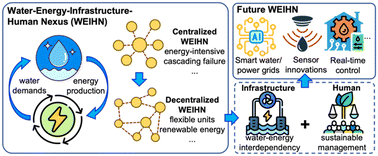
Environ. Sci.: Water Res. Technol., 2023,9, 2446-2471
https://doi.org/10.1039/D3EW00506B
Transition metal catalysts in the heterogeneous electro-Fenton process for organic wastewater treatment: a review
This work reviews transition metal catalysts for heterogeneous electro-Fenton, applied as suspended catalyst or modified cathode. The pollutant degradation performance and mechanism for H2O2 generation and activation to active species are discussed.

Environ. Sci.: Water Res. Technol., 2023,9, 2429-2445
https://doi.org/10.1039/D3EW00302G
Antibiotic resistance in urban stormwater: a review of the dissemination of resistance elements, their impact, and management opportunities
Traditional stormwater infrastructure facilitates the transport of antibiotic resistance genes while green stormwater infrastructure may capture the genes and promote horizontal gene transfer.

Environ. Sci.: Water Res. Technol., 2023,9, 2188-2212
https://doi.org/10.1039/D3EW00356F
The development history and evolutionary trends of percarbonate: Bibliometric analysis from 2000 to 2022
This work presents the first bibliometric analysis of 258 papers on percarbonate from 2000 to 2022. The research hotspots and trends of percarbonate research were analyzed and the challenges and prospects of percarbonate research were put forward.

Environ. Sci.: Water Res. Technol., 2023,9, 2171-2187
https://doi.org/10.1039/D3EW00085K
A review on environmental chemodynamics, isothermal, kinetics, and thermodynamics modeling for the adsorptive removal of Cr(VI) from the industrial effluent using magnetic nanoparticles as a bio-sorbent
The contamination of the hexavalent chromium [Cr(VI)] in the aquatic ecosystem poses environmental concerns due to its portable and highly poisonous nature.
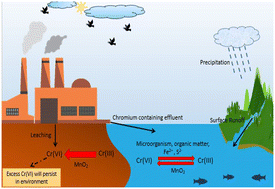
Environ. Sci.: Water Res. Technol., 2023,9, 1764-1782
https://doi.org/10.1039/D3EW00199G
Removal of metals from water using MOF-based composite adsorbents
This review article focuses on metal–organic framework (MOF) composites and the impact of mixing MOFs with other materials, such as polymers, carbon-based materials, and magnetic particles, to increase their performance to remove metals from water.

Environ. Sci.: Water Res. Technol., 2023,9, 1305-1330
https://doi.org/10.1039/D2EW00941B
Various surface-active agents used in flotation technology for the removal of noxious pollutants from wastewater: a critical review
Treating emerging pollutants from industrial effluent that cause inevitable damage to human wellness and the environment is paramount.
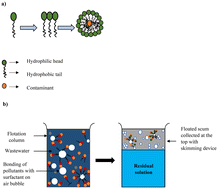
Environ. Sci.: Water Res. Technol., 2023,9, 994-1007
https://doi.org/10.1039/D3EW00024A
Resource recovery technologies as microbial risk barriers: towards safe use of excreta in agriculture based on hazard analysis and critical control point
Individual resource recovery processes are monitored as health risk barriers.
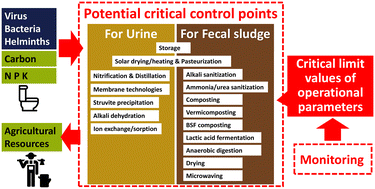
Environ. Sci.: Water Res. Technol., 2023,9, 1008-1029
https://doi.org/10.1039/D2EW00832G
Metal–organic framework-based materials: emerging high-efficiency catalysts for the heterogeneous photocatalytic degradation of pollutants in water
Water pollution has become one of the most important global environmental pollution problems, wherein various toxic and persistent organic pollutants in water pose a major threat to the environment.
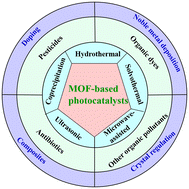
Environ. Sci.: Water Res. Technol., 2023,9, 669-695
https://doi.org/10.1039/D2EW00784C
Adsorption as a remediation technology for short-chain per- and polyfluoroalkyl substances (PFAS) from water – a critical review
Proposed treatment steps to target the removal of short-chain PFAS from contaminated aqueous solutions.

Environ. Sci.: Water Res. Technol., 2023,9, 344-362
https://doi.org/10.1039/D2EW00721E
Removal of Cl(−I) from acidic industrial wastewater through oxidation: a review on methods and mechanisms
The oxidation approaches for Cl(−I) removal from acidic industrial wastewater, classified as electrolysis, ultraviolet-induced and strong-oxidant-dominated methods according to the mechanisms, are reviewed in this article.
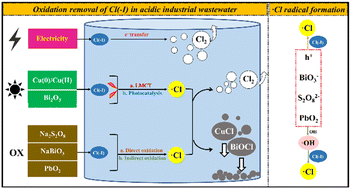
Environ. Sci.: Water Res. Technol., 2023,9, 38-47
https://doi.org/10.1039/D2EW00628F
Photosynthesis of hydrogen peroxide in water: a promising on-site strategy for water remediation
The history of photocatalysis of hydrogen peroxide in water is reviewed, and methodologies for developing high-performance photocatalysts are developed.
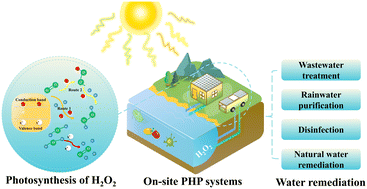
Environ. Sci.: Water Res. Technol., 2022,8, 2819-2842
https://doi.org/10.1039/D2EW00504B
Oxidative sorption of arsenite from water by iron: a mechanistic perspective
Removal of arsenite by oxidation and sorption via various iron particles (ZVI, bimetallic particles, iron (oxyhydr)oxides, bi- and tri-metal oxides, structural Fe(II) hydroxides and ferrate), and their respective removal methodologies are discussed.
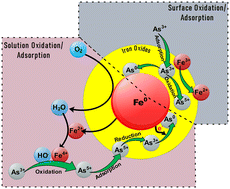
Environ. Sci.: Water Res. Technol., 2022,8, 2466-2490
https://doi.org/10.1039/D2EW00522K
A review of arsenic mitigation strategies in community water supplies with insights from South Asia: options, opportunities and constraints
A critical review of arsenic mitigation strategies, including technologies, practices, opportunities, and challenges, to bridge the knowledge gap between academic research and field applications.
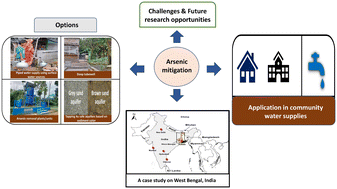
Environ. Sci.: Water Res. Technol., 2022,8, 2491-2520
https://doi.org/10.1039/D1EW00958C
Research progress of modified natural zeolites for removal of typical anions in water
The mechanism of natural zeolites for modification and the removal of anions.
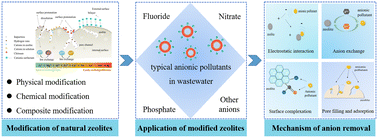
Environ. Sci.: Water Res. Technol., 2022,8, 2170-2189
https://doi.org/10.1039/D2EW00478J
Addressing main challenges in the tertiary treatment of urban wastewater: are homogeneous photodriven AOPs the answer?
Homogeneous photodriven advanced oxidation processes (HP-AOPs) have been increasingly investigated in past years as a possible alternative solution to conventional tertiary treatment methods of urban wastewater.

Environ. Sci.: Water Res. Technol., 2022,8, 2145-2169
https://doi.org/10.1039/D2EW00146B
A critical review on advanced anaerobic membrane bioreactors (AnMBRs) for wastewater treatment: advanced membrane materials and energy demand
Insights into membrane design, reactor configurations, energy balance analysis and concerning challenges in AnMBR application for wastewater treatment.
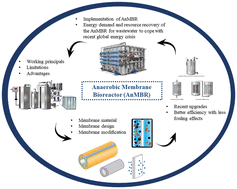
Environ. Sci.: Water Res. Technol., 2022,8, 2126-2144
https://doi.org/10.1039/D2EW00300G
Essential role of sunlight irradiation in aqueous micropollutant transformations: influence of the water matrix and changes in toxicities
We review the sunlight-induced photodegradation of micropollutants in water.

Environ. Sci.: Water Res. Technol., 2022,8, 1619-1638
https://doi.org/10.1039/D2EW00082B
Sorptive removal versus catalytic degradation of aqueous BTEX: a comprehensive review from the perspective of life-cycle assessment
Benzene, toluene, ethylbenzene, and xylene (BTEX) are commonly encountered as industrial contaminants.
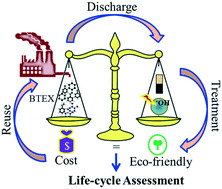
Environ. Sci.: Water Res. Technol., 2022,8, 1359-1390
https://doi.org/10.1039/D1EW00918D
Engineered osmosis – sustainable technology for water recovery, product concentration and energy generation
Engineered osmosis (EO) holds a vast untapped potential to be commercially exploited for various applications, including water recovery, product concentration, and energy generation.
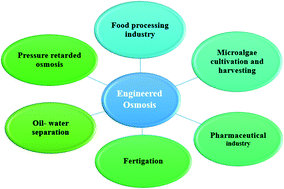
Environ. Sci.: Water Res. Technol., 2022,8, 1326-1358
https://doi.org/10.1039/D2EW00005A
Advances in biomass thermochemical conversion on phosphorus recovery: water eutrophication prevention and remediation
This review critically discusses the processes, mechanisms, and implications of indirect prevention and direct remediation of water eutrophication with biomass-based derivatives.

Environ. Sci.: Water Res. Technol., 2022,8, 1173-1187
https://doi.org/10.1039/D2EW00169A
Ammonia-oxidizing microbes and biological ammonia removal in drinking water treatment
Ammonia in drinking water can lead to formation of disinfection byproducts in disinfection and bacteria regrowth in water distribution systems. Biological ammonia removal is an economical and environment-friendly way in controlling ammonia.
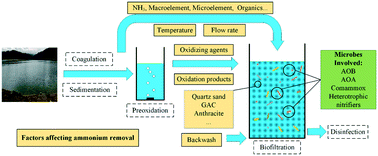
Environ. Sci.: Water Res. Technol., 2022,8, 1152-1172
https://doi.org/10.1039/D1EW00827G
Occurrence of per- and polyfluoroalkyl substances in water: a review
The environmental occurrence of PFAS in different water systems and their likely sources and fate is discussed.
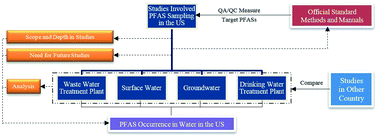
Environ. Sci.: Water Res. Technol., 2022,8, 1136-1151
https://doi.org/10.1039/D1EW00851J
Photo-chemical/catalytic oxidative/reductive decomposition of per- and poly-fluoroalkyl substances (PFAS), decomposition mechanisms and effects of key factors: a review
Mechanisms of photodegradation of PFAS with different chain lengths and structures using a wide range of photo-oxidative/reductive agents, effects of key parameters on these processes, and synergistic effects of other treatments are reviewed.
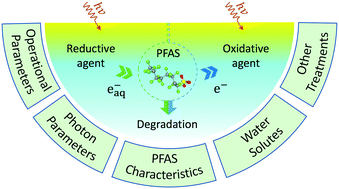
Environ. Sci.: Water Res. Technol., 2022,8, 698-728
https://doi.org/10.1039/D1EW00774B
A review of the impact of testing conditions on the performance and quality control of locally manufactured, point-of-use ceramic water filters
This review critically analyzes the most recent literature on parameters affecting the performance of ceramic water filters and compares proposed standardization testing as quality control tools.
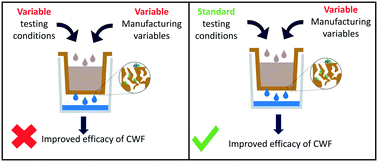
Environ. Sci.: Water Res. Technol., 2022,8, 510-522
https://doi.org/10.1039/D1EW00587A
Resource utilization of electroplating wastewater: obstacles and solutions
The source, composition and impacts of impurities on electroplating wastewater treatment are discussed to achieve higher recovery of metals and water.
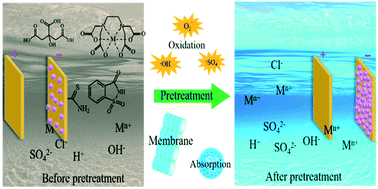
Environ. Sci.: Water Res. Technol., 2022,8, 484-509
https://doi.org/10.1039/D1EW00712B
Insights into the relationship of reactive oxygen species and anions in persulfate-based advanced oxidation processes for saline organic wastewater treatment
This paper reviewed the properties and relationship of reactive oxygen species and anions in persulfate-based advanced oxidation processes for saline organic wastewater treatment.

Environ. Sci.: Water Res. Technol., 2022,8, 465-483
https://doi.org/10.1039/D1EW00731A
Treatment of organic matter and ammonia nitrogen in wastewater by electrocatalytic oxidation: a review of anode material preparation
The research progress of electrochemical treatment of organic matter and ammonia nitrogen in wastewater is reviewed in this work.
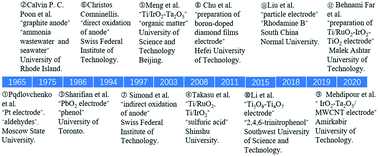
Environ. Sci.: Water Res. Technol., 2022,8, 226-248
https://doi.org/10.1039/D1EW00695A
Occurrences and changes in bacterial growth-promoting nutrients in drinking water from source to tap: a review
Understanding bacterial growth-promoting nutrients are essential to produce and supply biostable drinking water.
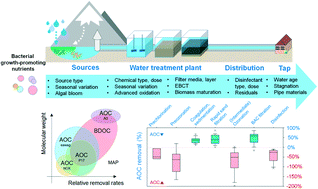
Environ. Sci.: Water Res. Technol., 2021,7, 2206-2222
https://doi.org/10.1039/D1EW00514F
Electrospun nanofibers: role of nanofibers in water remediation and effect of experimental variables on their nano topography and application processes
A comprehensive review on electrospun nanofibers: an insight into the latest solutions provided by the scientific community for large scale manufacturing of nanofibers and the role of nanofibers in water remediation.
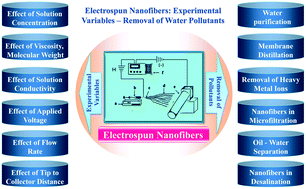
Environ. Sci.: Water Res. Technol., 2021,7, 2166-2205
https://doi.org/10.1039/D1EW00393C
Influence of atmospheric deposition on surface water quality and DBP formation potential as well as control technology of rainwater DBPs: a review
This manuscript mainly conducted a literature review of the contribution of atmospheric dry and wet deposition to surface water quality and DBP formation potential.
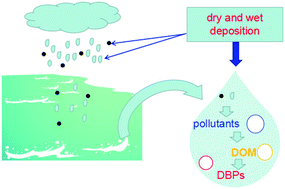
Environ. Sci.: Water Res. Technol., 2021,7, 2156-2165
https://doi.org/10.1039/D1EW00520K
The rejection of perfluoroalkyl substances by nanofiltration and reverse osmosis: influencing factors and combination processes
This paper reviewed the various factors affecting the removal of PFASs from water by nanofiltration and reverse osmosis.
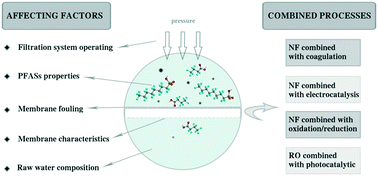
Environ. Sci.: Water Res. Technol., 2021,7, 1928-1943
https://doi.org/10.1039/D1EW00490E
Macroscopic covalent organic framework architectures for water remediation
This article has critically reviewed the story of macroscopic developments of COFs for water remediation. The various macroscopic COFs for removing toxic organic and inorganic pollutants have been systematically surveyed.

Environ. Sci.: Water Res. Technol., 2021,7, 1895-1927
https://doi.org/10.1039/D1EW00408E
A comprehensive review of adsorbents for fluoride removal from water: performance, water quality assessment and mechanism
This review gives a comprehensive summary of various defluoridation adsorbents in terms of performance, water quality assessment and mechanisms.
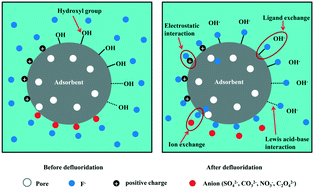
Environ. Sci.: Water Res. Technol., 2021,7, 1362-1386
https://doi.org/10.1039/D1EW00232E
The fate and impact of coagulants/flocculants in sludge treatment systems
Coagulants and flocculants have been widely used in various applications, especially in wastewater treatment and sludge dewatering, which result in their high accumulation in waste-activated sludge (WAS).
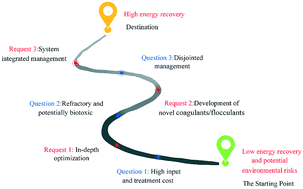
Environ. Sci.: Water Res. Technol., 2021,7, 1387-1401
https://doi.org/10.1039/D1EW00165E
Electrocoagulation for industrial wastewater treatment: an updated review
Electrocoagulation (EC) is a promising method that has been effectively employed in the treatment of various types of industrial effluents.
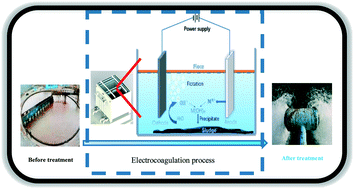
Environ. Sci.: Water Res. Technol., 2021,7, 1177-1196
https://doi.org/10.1039/D1EW00158B
Utilizing cobalt-doped materials as heterogeneous catalysts to activate peroxymonosulfate for organic pollutant degradation: a critical review
This review highlights recent advances in peroxymonosulfate (PMS)-based advanced oxidation processes (AOPs) using cobalt-doped materials as heterogeneous catalysts.

Environ. Sci.: Water Res. Technol., 2021,7, 1197-1211
https://doi.org/10.1039/D0EW01042A
About this collection
In addition to high quality research papers, Environmental Science: Water Research & Technologyfeatures topical review articles. Reviews will be added to this webpage as soon as possible after publication.